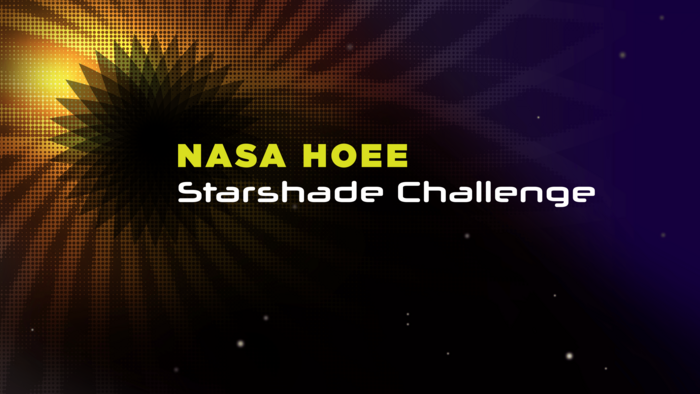WASHINGTON, Oct. 27, 2022 – AIP is organizing a competition for undergraduate students in the physical sciences to design a spaceborne starshade. The device will orbit Earth, blocking the light from a star and allowing ground-based telescopes to observe extra-solar planets.

Credit: AIP
WASHINGTON, Oct. 27, 2022 – AIP is organizing a competition for undergraduate students in the physical sciences to design a spaceborne starshade. The device will orbit Earth, blocking the light from a star and allowing ground-based telescopes to observe extra-solar planets.
Since the light coming from a star is likely billions of times brighter than the reflected light from an Earth-like exoplanet, obstructing the light from the host star is essential to identify and characterize the planet. The Hybrid Observatory for Earth-like Exoplanets proposes pairing the newest and largest ground-based telescopes with a starshade orbiting Earth to do just that.
But the technology to create such a device does not exist yet. Hence, the Starshade Challenge.
“If successful, we could eventually see those Earth-like planets with telescopes right here on Earth! But the old way of building a starshade would cost too much and the starshade would be far too heavy for launch,” said NASA scientist and Nobel laureate John Mather, who proposed the hybrid observatory and the undergraduate competition. “We need something enormous and ultralight, but also stiff with just the right shape. What I love about the challenge is, there’s no law of nature against success, but we really don’t know how to design this thing or unfold it in space.”
The AIP project is supported by NASA and the Society of Physics Students and encourages undergraduates to form teams that will include local faculty and students in physics, astronomy, engineering, materials science, aerospace engineering, or any related program.
“AIP is excited to promote and manage this challenge, which will help undergraduate students develop critical thinking skills and aid the scientific community in the next groundbreaking stage of exoplanet exploration,” said Michael Moloney, CEO of AIP.
The main goal of the challenge is to minimize the mass of the starshade – which will measure 100 meters in diameter – while maintaining the spacecraft’s viability and stability. Students will need to consider the material, structure, and mechanical concepts behind the design.
“Very rarely do college students have the opportunity to work on a real-life NASA engineering problem as challenging and as interesting as this starshade,” said NASA aerospace engineer and competition judge Alejandro Rivera. “This challenge represents a fantastic opportunity for them to put to use the skills they have learned in college while drawing invaluable lessons from working on this project that we hope they can carry into their professional careers.”
The challenge includes two phases: concept generation and design refinement. In the first, teams will create a detailed rendering of their starshade. The best 25 submissions will be awarded a $1,000 honorarium to build a scale model in the next phase. Additionally, the top three teams will receive $2,000 for student research and conference travel. After the second phase, a NASA-led committee will review the models and designs to select a final winner, awarding $5,000 for first place, $3,000 for second place, and $2,000 for third place. Each prize is to be used for further student research or conference travel.
“Feedback from contributing to a big project like this is valuable like no other. It’s a challenge —participants will learn to problem solve and think through every single step,” said Janessa Slone, an undergraduate volunteer and former SPS intern working with AIP to coordinate the challenge. “Students will have to think laterally to complete all of the requirements, especially reducing the total mass of the starshade.”
More information about the challenge can be found at https://www.aip.org/starshade. The first phase will conclude mid-December, while the second will begin and end in January and April 2023, respectively. For questions regarding the challenge, contact [email protected].
###
ABOUT AIP
The mission of AIP (American Institute of Physics) is to advance, promote, and serve the physical sciences for the benefit of humanity. AIP is a federation that advances the success of our 10 Member Societies and an institute that operates as a center of excellence supporting the physical sciences enterprise. In its role as an institute, AIP uses policy analysis, social science, and historical research to promote future progress in the physical sciences. AIP is a 501(c)(3) membership corporation of scientific societies.
###




